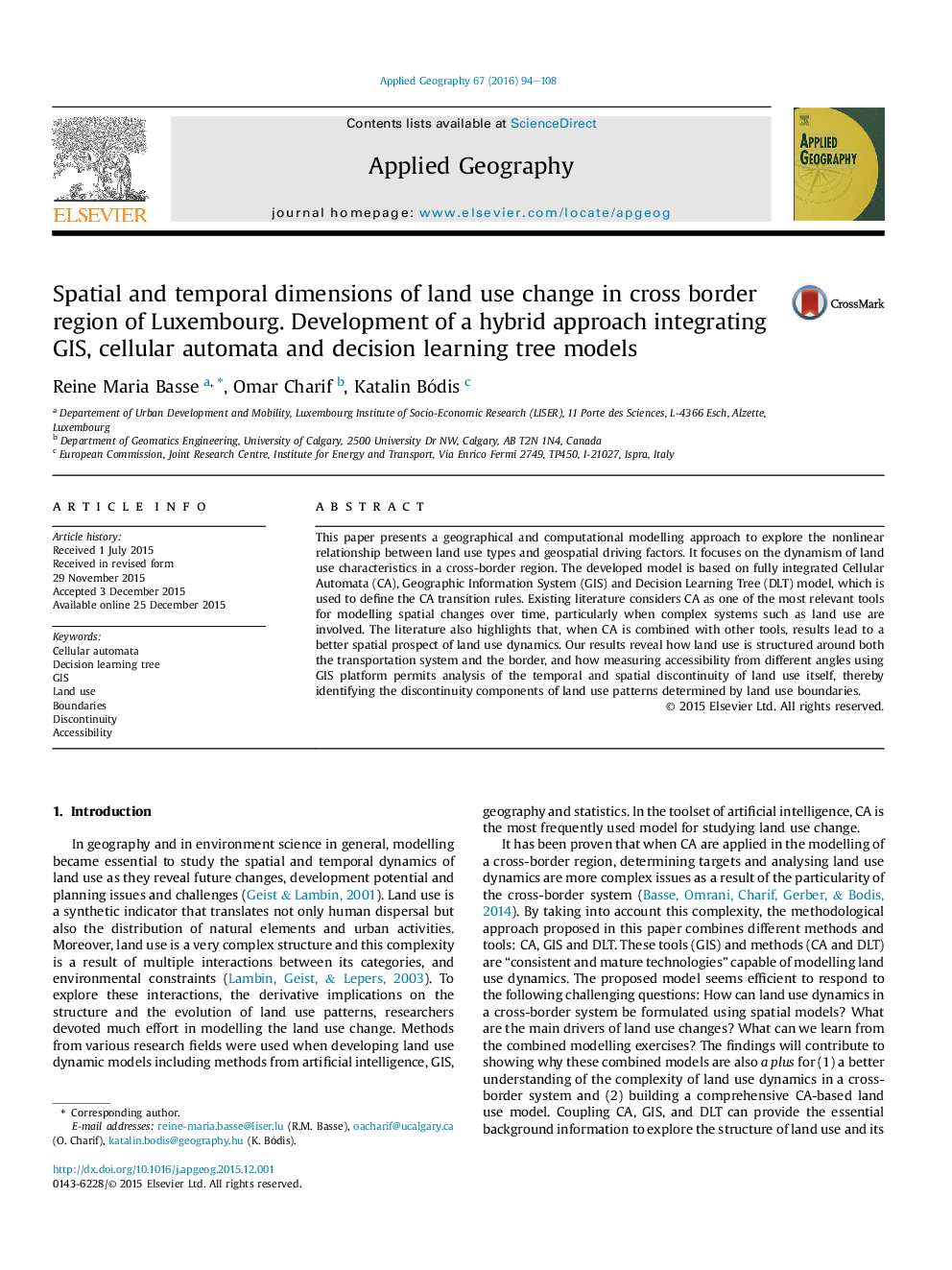| کد مقاله | کد نشریه | سال انتشار | مقاله انگلیسی | نسخه تمام متن |
|---|---|---|---|---|
| 83212 | 158696 | 2016 | 15 صفحه PDF | دانلود رایگان |

• Land use change is simulated using cellular automata model.
• Decision Tree Machine Learning algorithm is used to define the model transition rules.
• We discussed land use change in a cross border region.
• We discussed the spatial and temporal discontinuity of land use changes.
• The role of the accessibility in observed land use structure is examined.
This paper presents a geographical and computational modelling approach to explore the nonlinear relationship between land use types and geospatial driving factors. It focuses on the dynamism of land use characteristics in a cross-border region. The developed model is based on fully integrated Cellular Automata (CA), Geographic Information System (GIS) and Decision Learning Tree (DLT) model, which is used to define the CA transition rules. Existing literature considers CA as one of the most relevant tools for modelling spatial changes over time, particularly when complex systems such as land use are involved. The literature also highlights that, when CA is combined with other tools, results lead to a better spatial prospect of land use dynamics. Our results reveal how land use is structured around both the transportation system and the border, and how measuring accessibility from different angles using GIS platform permits analysis of the temporal and spatial discontinuity of land use itself, thereby identifying the discontinuity components of land use patterns determined by land use boundaries.
Journal: Applied Geography - Volume 67, February 2016, Pages 94–108